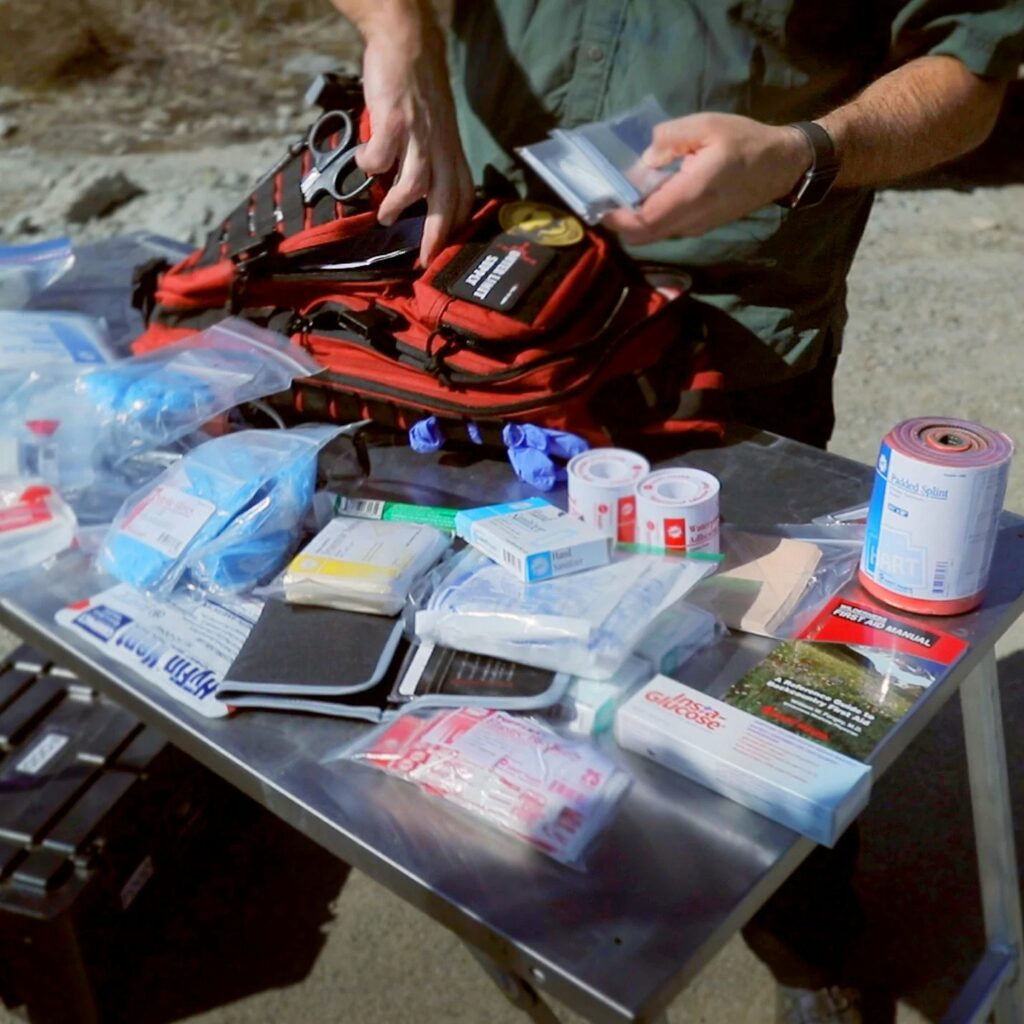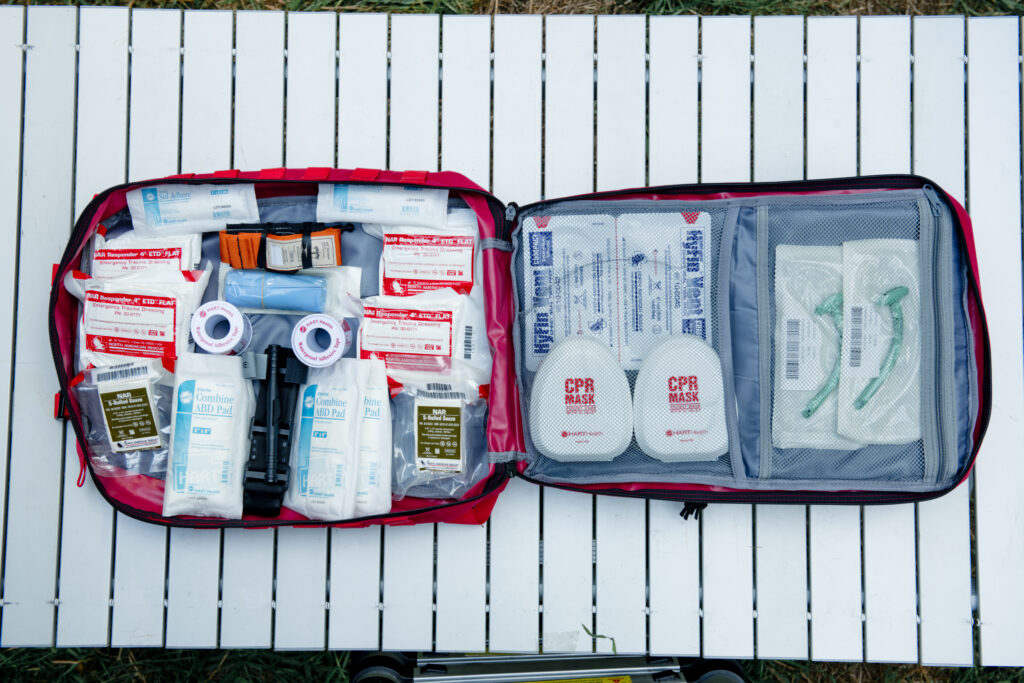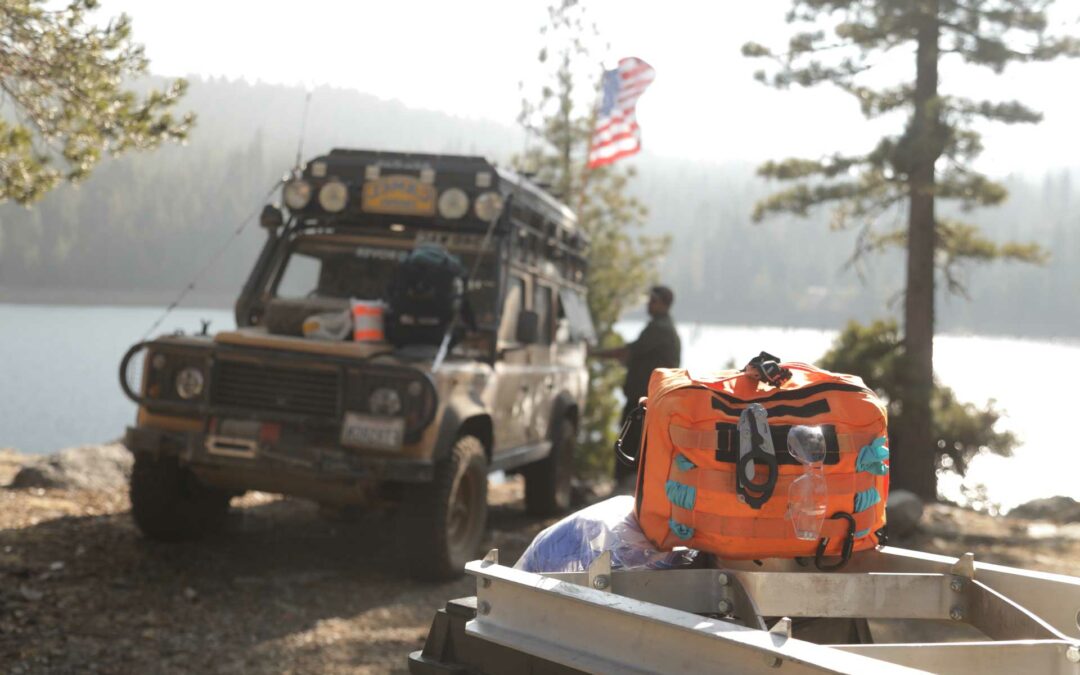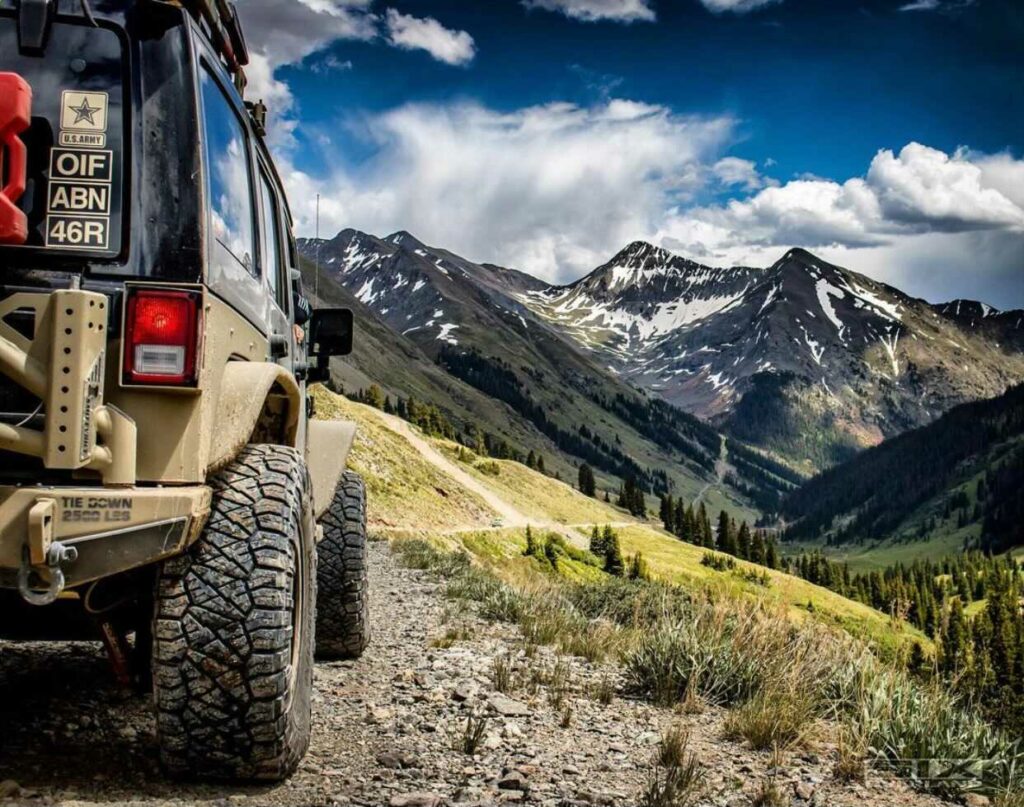By Chris Solis
Know How to Organize the Different Parts of your First Aid Kit
When heading out into the backcountry we need to be prepared for any misadventure that we may encounter. Vehicle maintenance needs to be done in advance, spare parts double checked, sleeping and cooking gear need to be accounted for, etc.
Once you have all that squared away, you’re ready to head out into the wilderness, right?
Well, not quite yet.
First Aid Kit – Too Easily Overlooked
One area of preparation that commonly needs the most attention and improvement is First Aid. For me, First Aid is the most important part of my system because as much as a mechanical breakdown can ruin a trip, or being cold and hungry can be miserable, not being able to care for an injured member of your family or group is one of the worst situations to be in.
When investing your time and money into a first aid kit and training you need to make sure the gear and education you are receiving addresses realistic problems you will encounter so that you will have the confidence to handle them in real life.
The goal of this article is not to tell you which kit to buy, or which class to take, but to get you thinking about what YOU want from your first aid system and how to organize it.
More often than not, people buy an expensive trauma or first aid kit that promises care for almost all injuries with 300+ items crammed into a cool looking kit. And then once the purchase is made, ‘First Aid’ gets checked off and is considered done.
First Aid Kit – 3 Components
The reality is that most first aid kits on the market purport to be a jack of all medical necessities, and this is exactly why they fail the consumer. So where do you start? First we need to define the types of care we are going to provide.
This is important because the first aid kit you carry and use needs to address different types of care when you are miles from help. I break it down into three components:
- Boo Boos (I have kids.)
- Basecamp First Aid
- Trauma Care
Each has its own priorities and therefore I carry three kits to address each one. As we go through them I want you to think about how you would set up your kit to deal with the types of injuries and ailments you could possibly encounter.

Boo Boo Kit
This is for the little cuts and scrapes, bumps and bruises that everyone gets just by being out and about. They don’t require anything more than a quick wipe off and a band aid for the most part.
If you have children, you will go through 100 bandaids on a normal trip. This is a small kit, easy to grab from the glove box or other cubby. This should be accessible when the rig is fully loaded so you can address things when you stop for lunch, bio breaks, etc.
Some items to consider are bandaids, neosporin, chemical ice pack, chapstick, moleskin, etc.
Basecamp First Aid Kit
This is more of a true first aid kit, designed to care for people at camp and take care of the medical issues that come up. Think of it as the mobile medicine cabinet that can be stored in your vehicle and brought out at camp when the rig is mostly unpacked.
This contains medicines for headaches, stomach aches, wound care supplies, creams and ointments for a variety of ailments, etc. This is designed to treat those issues that don’t require you to end the trip, but make the person more comfortable and enjoy themselves.
Trauma Care Kit
This is the one that needs to be easily accessible, fully stocked at all times, and only used for major injuries. The kit should be organized to allow for the ABC (Airway, Breathing, Circulation) trauma protocol to be followed.
Having a separate trauma kit allows for all of the equipment needed for each step to be immediately available without having to hunt through 299 other things during an emergency.

I recommend using a soft sided backpack (emergencies don’t always happen right next to your rig), and that it be capable of carrying enough equipment to care for the number of people in your crew.
Invest in your own safety by having the gear needed for additional responders to jump in at the scene. Your kit should have equipment to not only treat, but protect and remove patients from more harm.
And here’s the reality of backcountry trauma care when traveling way off the beaten path: no matter what you carry or level of training you have, you are significantly limited in what you can do when dialing 911 is not an option.
Once you embrace this and know that all you are trying to do is have the right first aid kit and tools accessible at the right time in the right circumstances/situations, you are well on your way to being properly prepared.
About Chris
Chris moderates and manages the First Aid section of the Overland Boot Camp section on our forums.
Above and beyond being an Advanced Trauma Life Support Instructor, and Flight Surgeon for the East Bay Regional Parks, Chris is a passionate outdoorsman and teacher. He spends his professional time as the Chair Department of Surgery Sutter Delta Medical Center, and his personal time off-roading in his Camel Trophy Defender 110.



Great article. I usually carry three smaller separate bags in addition to a general medicine box/ boo boo kit. If I can’t leave the patient I can easily tell some one “grab the blue first aid bag” versus another. Usually one for emergency specific medications (red), one for airway (blue), and one for trauma/ splinting (orange). All three are MOLLE capable so they can be arranged all over another piece of equipment such as a back pack without themselves forced to be another large bulky piece of luggage.
Good article. Each of my family members carries an IFAK, even the dogs, when ever we are away from civilization. If you have dogs, I recommend practicing first aid on them so when the time comes to do it for real, they are more calm.
Really good stuff. I just bought 6 regular first aid kits to be the quickies, one for each car in the family. My daughter is an EMT and really enjoyed the videos on the separate kits. She and I will be carrying the trauma type kits with the Isreali bandages and ABC pieces. Well, she has most in her car anyway we need a good go bag for her. Thanks for the continued great info!
Super info. I spend several months of every year leading teams of travelers into the most remote corners of the Himalayas on motorbikes and in SUVs. We have massive first aid kits, a considerable amount of training, and no chance of getting to reliable medical help without a helicopter, which we always have on standby. It puts first response in a whole new light. For us, one tool we have in our chest is a professional medic on standby in the States. He’s always a satellite phone call away. More than once, in places like remote Chile, or Nepal, we have found our communication tools more valuable than anything in our first aid kit. We have treated bleeding ear infections, shattered limbs, all with a medical expert on the phone to guide us through situations no Woofer is comfortable treating blindly. Great editorial. Thank you.
Liked the article. Lots of valuable info for a newbie. I’m now motivated to add a kit to all our vehicles.
What an awesome write up. Thanks for sharin’ and raising awareness of such an important topic.
Nice article. I like your gear organization system. Great reminder to freshen up the kit. Regular reorganization also helps keep the salves, creams, sprays and meds up to date. I might suggest adding one more category – akin to Boo Boos. It regards something that is regularly encountered here in the west. With kids and pets, the part of my first aid kit’s bag assembly most often used is my Cactus Kit.
The Cactus Kit contains assorted needle-nose pliers – small & large; tweezers; needles; magnifying optics. Also in the small zippered bag I keep some topical analgesics & sanitizer.
This is a good write-up and is organized well (minor, primary, and trauma). For those looking for a turnkey purchase, I have invested in a My Medic “MyFAK” pack, which has a lot of the minor thru trauma level equipment. The also offer first responder/military discounts. Well worth it if you’re not interested in building your own kit from scratch!
“Normally” we don’t move people. But when there’s extended time/distance to medical care we may have to. Most overlanding trips don’t provide for this medical need.
This item fits in first aid backpack or vehicle. It allows safe and rapid movement of injured person if indicated and at a reasonable cost. Attached is just an example and I have no affiliation with this product other than I have used it (more than once). https://www.rescue-essentials.com/rescue-essentials-quiklitter-lite/